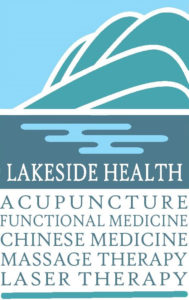CORTISONE IMPROVED WITH LLLT
Laser plus cortisone more effective than cortisone by itself
Photomed Laser Surg.2010 Oct; 28(5):639-46FROZEN SHOULDER BENEFITS
A significant improvement in laser therapy compared to the control group. The treatment group experienced significantly less pain and signficantly improved disability scores. Range of motion in the treatment group was better than placebo.
Photomed Laser Surg. 2008 March 16.
TENDINOPATHY BENEFITS
Treatment affects degenerative changes in tendon matrix/collagen production and inflammation. The mean effect over placebo was 32%. Optimal treatment intervals: daily or every other day for 2-4 weeks
Bjordal et al, Physical Therapy Reviews 2001NECK PAIN BENEFITS
Significant improvements in chronic pain
Efficacious in providing pain relief for a period of 3 months.
Chow, RT, Pain. 2006 Sep; 124(1-2):201-1095% EFFECTIVENESS AT RELIEF OF NECK PAIN; RECURRENCE OF PAIN 58% IN PLACEBO GROUP, BUT ONLY 14% IN LASER TREATED GROUP
Soriano et al, Laser Therapy, 1996 (8) pp 149-154CARTILAGE REGENERATION
Laser therapy significantly enhanced the stiffness of the cartilage after approximately 8 weeks of treatment. Laser therapy has ability to regenerate damaged cartilage.
NON-STEROIDALS: COMPARABLE EFFECTS
Laser as effective as NSAIDs
Bjordahl J, Photomed Laser Surg. 2006 Jun;24(2):158-168ACHILLES TENDINITIS
Prostaglandin E2 concentrations were significantly reduced
Pressure pain threshold had increased significantly and reduced inflammation and pain
Br J Sports Med. 2006 Jan;40(1):76-80; discussion 76-80.TEMPORMANDIBULAR JOINT (TMJ)
Decreased of pain and anti-inflammatory effects; Confirmed by thermographic examination.
Photomed Laser Surg. 2006 Aug; 24(4):522-7INCREASE MOUTH OPENING, DECREASED MUSCULAR PAIN, DECREASED EATING DIFFICULTY, AND DECREASED TENDER POINTS
Photomed Laser Surg. 2006;25(5):637-0CORTISONE HAS SIMILAR EFFECTS AS LASER
Animal study; 810-nm laser was almost as good as cortisone at reducing swelling.
Higher doses showed most benefit
Laser therapy reduced joint swelling and correlated with decreased serum prostaglandins
Castano AP, Lasers Surg Med 2007 Jul; 39(6):543-50LASER vs ULTRASOUND AND BRACING
Laser therapy was the only treatment that increased grip strength
Journal of Hand Therapy, Jan-March 2008CLINICAL APPLICATION OF GaAIAs 830 NM DIODE LASER IN TREATMENT OF RHEUMATOID ARTHRITIS
The authors have been involved in the treatment of rheumatoid arthritis (RA), in particular chronic poly-arthritis and the associated pain complaints. The biggest problem facing such patients is joint contracture, leading to bony ankylosis. This in turn severely restricts the range of motion (ROM) of the RA-affected joints, thereby seriously restricting the patient’s quality of life (QOL). The authors have determined that in these cases, daily rehabilitation practice is necessary to maintain the patient’s QOL at a reasonable level. The greatest problem in the rehabilitation practice is the severe pain associated with RA-affected joints, which inhibits restoration of mobility and improved ROM. LLLT or low reactive level laser therapy has been recognized in the literature as having been effective in pain removal and attenuation. The authors accordingly designed a clinical trial to assess the effectiveness of LLLT in RA related pain and ROM improvement. 170 patients with a total of 411 affected joints were treated using a GaAlAs diode laser system. Patients mean age was 61 years. Effectiveness was graded under three categories: excellent (remarkable improvement), good (clearly apparent improvement), and unchanged (little or no improvement). For pain attenuation, scores were: excellent 59.6%; good 30.4%; unchanged 10%. For ROM improvement the scores were: excellent 12.6%; good 43.7%; unchanged 43.7%. This gave a total effective rating for pain attenuation of 90%, and for ROM improvement of 56.3%.
Kanji Asada, Yasutaka Yutani, Akira Sakawa and Akira Shimazu, Department of Orthopaedic Surgery, Osaka City University Medical School, JapanTHE ABILITY OF LLLT TO MITIGATE FIBROMYALGIC PAIN
Results have suggested that the pain relieving properties of LLLT have been the most consistent benefit. The duration of benefit has varied from one hour to one week, and seems to increase as treatment progresses. Improvement with regard to abnormal sensations in the limbs (paresthesia and subjective swelling) appears to be fairly consistent. Improvements in fatigue, mood and headache are noted. Although the pilot study is incomplete, I believe that these early findings warrant the further investigation of laser therapy for patients with fibromyalgia. This is further supported by the relatively few and harmless side effects of this therapy and the reality that there are few effective alternative treatments for fibromyalgia patients.
The CFIDS Chronicle Physicians’ Forum Fall 1993 Douglas Ashendorf, MD, FAAPMR Newark, New Jersey


